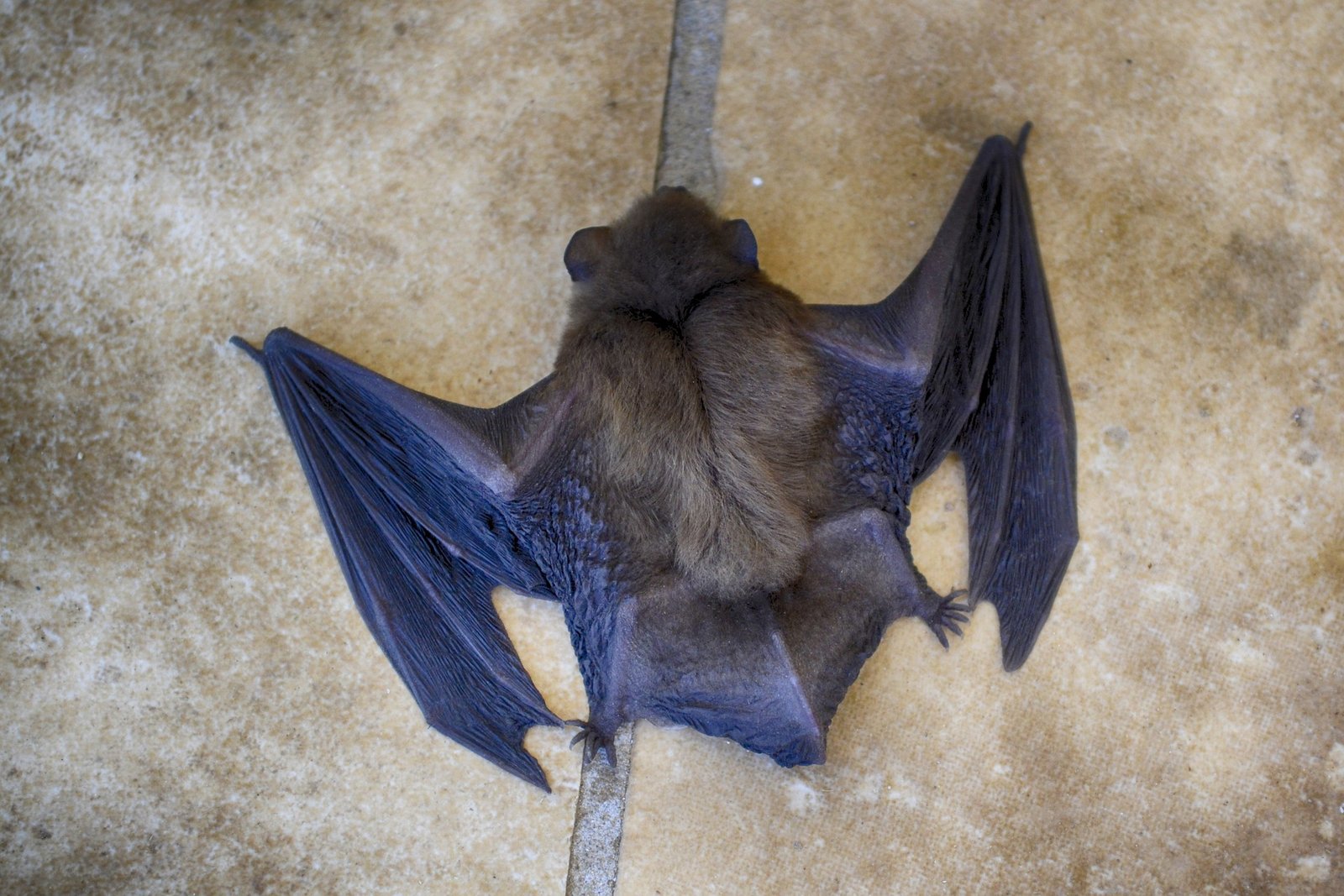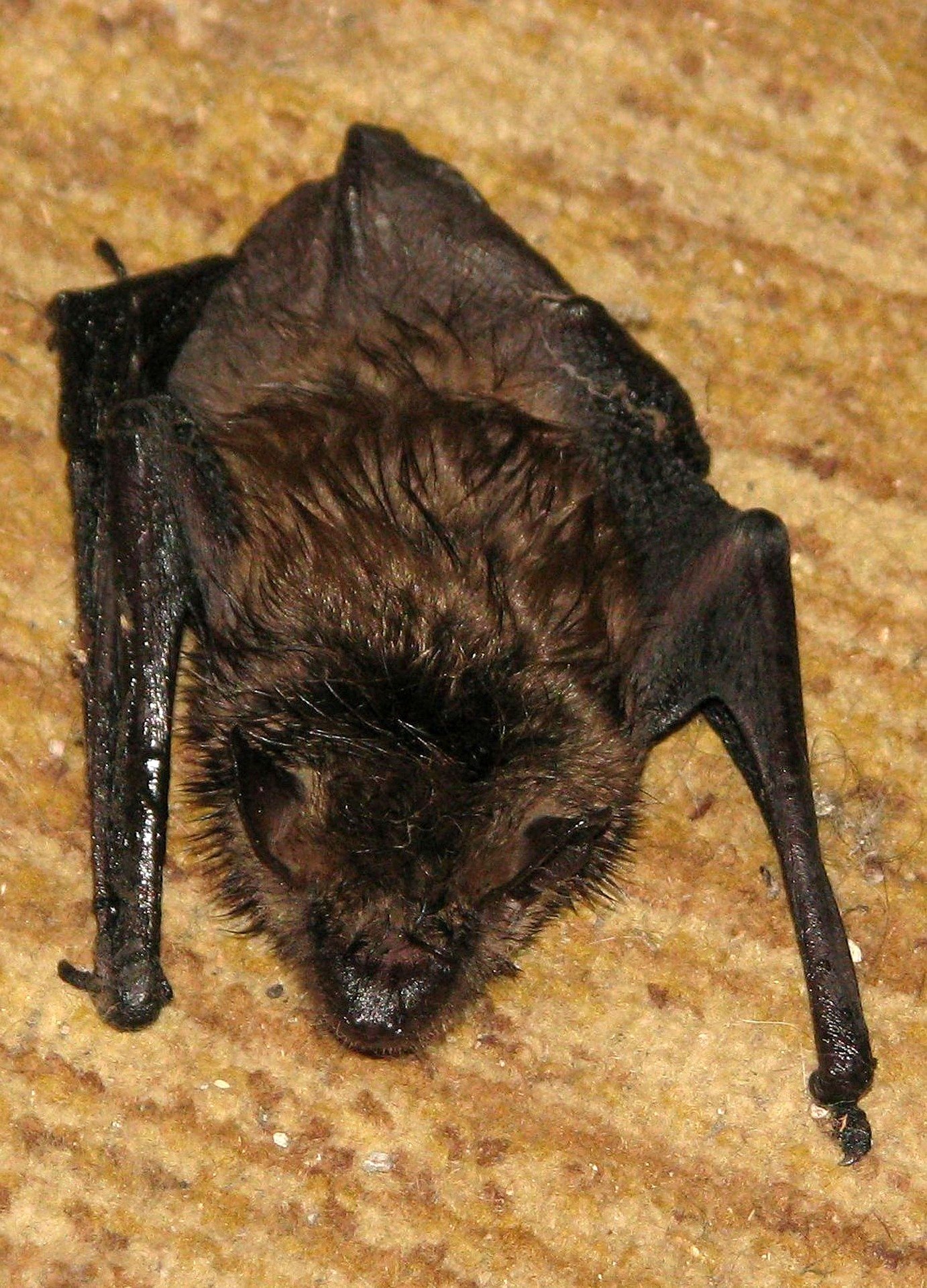Little Brown Myotis: Myotis Lucifugus

Physical Characteristics Of The Little Brown Myotis Bat
The little brown myotis is apart of the Myotis genus, which is represented in three species. This bat weighs between 5.5 and 12.5 g, and the weights of individual bats vary seasonally and are the least as bats emerge from hibernation in the spring.
The adult forearm length ranges from 36 to 40 mm, with a total body length of 8.0-9.5 cm. The adult wingspan of a small brown bat is 222-269 mm.
The body’s color ranges from pale tan to reddish to dark brown, and the ventral side is lighter. The feet have long hair on the toes, extending to the tips of the toes.
Learn More: Bats That Can Be Found In The Attic
Little Brown Myotis Behavior
Little brown bats are mainly nocturnal, and at dusk, they emerge from their roosts. Most return to the roost by four or five o’clock in the morning; primary activity occurs two hours after dusk, and secondary activity occurs just before dawn.
Myotis lucifugus does not migrate long distances. These bats typically migrate less than 100 miles. This species does not display roost territoriality, and large colonies have been reported in a single roost of as many as 300,000 bats.
The Myotis lucifugus can increase urine concentration to better withstand water stress in low humidity environments with limited water supply. Nevertheless, only this subspecies is known to do this.
Each day, Myotis lucifugus spends a large amount of time grooming. Little brown bats use their claws to groom their fur and clean their wing membranes with their tongue/teeth.
Hibernation Habits Of Little Brown Myotis

Usually, these bats go into daily torpor, and the time of hibernation during the winter depends on the roosts’ altitude/location. It usually starts from September to November and ends between March and May. In the fall, the young remain active longer to construct fat deposits to last the winter.
Little brown myotis undergo repeated periods of torpor (inactive) lasting 12 to 19 days during hibernation but may remain in torpor for as long as 83 days. End-of-hibernation signals include weather conditions in the area and the excitement of neighboring bats.
Little brown bats significantly alter their body temperatures. These bats can withstand cold as low as 6.5 degrees Celsius and heat up to 54 degrees Celsius. Myotis lucifugus deposits 13 different fat types, enabling them to produce heat efficiently and quickly during arousal from hibernation torpor. 1Go To Source animaldiversity.org -“Myotis lucifugus little brown bat”
Little Brown Bat Reproduction & Life Cycle
Mating season is in the fall, but it’s not until spring that fertilization happens. Little brown bats form enormous nursery colonies in the spring.
A nursery colony may have thousands of bats in just one cave. A single female bat will give birth to a single pup, and the female hangs right-side up during labor. The baby bat attaches to a teat by itself. It takes about two weeks to nurse, and the offspring will fly on its own at around three weeks old. 2Go To Source nhpbs.org -“Little Brown Bat – Myotis lucifugus”
Little Brown Myotis Diet & Foraging Tendencies
The Little Brown Myotis bat feeds on a variety of small flying insects. By using echolocation, they locate these insects. Typically, these are moths, flies, mosquitoes, mayflies, beetles, and midges, but they are opportunistic feeders, which means that they feed on any available insect species.
This bat will leave the roost to forge at least two times every day. The first forge of the day is at sunset, and the second is before sunrise. They will rest to conserve energy and digest their food in between forages.
Pregnant female bats tend to feed in larger areas, but they remain closer to the maternity roost once their pups are born. Every night, females suckling their young may consume the equivalent of their body weight in insects.
Most little brown bats consume 1,000 insects every night (half their body weight). Before hibernation, little brown myotis will east even more insects, increasing their weight by 30 percent. 3Go To Source hww.ca -“Little Brown Bat”
Little Brown Myotis Top 5 Prey
- Spiders
- Gnats
- Mosquitoes
- Small Beetles
- Moths
Predators Of The Little Brown Bat
Many roost predators prey upon little brown bats. Weasels, raccoons, rats, mice, many snake species, and domestic cats readily prey on roosting small brown bats. Hawks and owls also kill and eat little brown bats during flight. Martens have also been found feeding on hibernating small brown bats. 4Go To Source dept.psu.edu -“Little Brown Bat”
Little Brown Myotis Habitat

The habitat use of Little Brown Myotis throughout their range is influenced by season, sex, and reproductive status. This species is a cave-hibernating bat, meaning they search for caves, cellars, tunnels, and other underground structures during winter. Typically, these structures have high levels of humidity, minimal airflow, and a constant temperature.
Both sexes of this bat species share hibernacula. In the spring, hibernacula bats emerge and migrate to roosting/foraging grounds in the summer. Little Brown Myotis usually use human structures such as bridges, buildings, and attics during the summer, but they are also linked to forested habitats near water, where reproductive females roost together in tree cavities and under loose tree bark.
Female brown bats prefer hot and humid roosting sites to give birth and rear pups. Male little brown myotis don’t require the same temperature requirements as a maternity colony and tend to roost alone. Due to a higher presence of snags and decomposing trees, old-growth forests are often selected over young-growth forests. 5Go To Source dnr.state.mn.us -“Myotis lucifugus”
Range Of Little Brown Myotis
This species is known to inhibit the United States, appearing in Alaska, Canada, Southern California, Northern Arizona, and Northern New Mexico (USA). Due to increases in disease, the species is less apparent in the Sothern United States. 6Go To Source georgiabiodiversity.a2hosted.com -“Myotis lucifugus”
Conservation
A disease known as white-nose syndrome, caused by a fungus that is believed to have been inadvertently brought to North America from Europe, threatens little brown bats.
In humid, cold environments like caves and mines where small brown bats hibernate, the fungus grows.
The syndrome affects the bats by using all of their body’s fat resources during hibernation. They will then need to forage during cold weather that proves deadly to the species.
The fungus is also thought to affect the wing membrane, which helps to maintain the balance of water in bats. Thirst can wake bats up from hibernation because of this, which may be why those infected with the white-nose syndrome can be seen flying outside caves and mines during the winter.
Bats are at high risk of disappearing because of white-nose syndrome at more than three-quarters of their hibernation sites. Mass die-offs mean that no little brown myotis will be left to reproduce. 7Go To Source ontario.ca -“Little brown myotis”
Sources:
- Havens, A. 2006. “Myotis lucifugus” (On-line), Animal Diversity Web. Accessed January 06, 2021 at https://animaldiversity.org/accounts/Myotis_lucifugus/
- “Little Brown Bat – Myotis Lucifugus – NatureWorks.” Nature Works PBS, PBS, nhpbs.org/natureworks/littlebrownbat.htm. Accessed 6 Jan. 2021.
- Langlois, Annie. “Hinterland Who’s Who – Little Brown Bat.” Canadian Wildlife Federation, 2013, www.hww.ca/en/wildlife/mammals/little-brown-bat.html#sid2.
- PSU. “Little Brown Bat.” The Virtual Nature Trail At Penn State New Kingston, Penn State University, 22 July 2014, www.dept.psu.edu/nkbiology/naturetrail/speciespages/little_brown_bat.html#:%7E:text=Little%20brown%20bats%20are%20preyed,and%20eat%20little%20brown%20bats.
- “Myotis Lucifugus.” Minnesota Department Of Natural Resources, Minnesota DNR, www.dnr.state.mn.us/rsg/profile.html?action=elementDetail&selectedElement=AMACC01010. Accessed 6 Jan. 2021.
- “Little Brown Myotis Lucifugus.” Georgia Department Of Natural Resources, Georgia Wildlife Resources Division, georgiabiodiversity.a2hosted.com/natels/profile?es_id=15794. Accessed 6 Jan. 2021.
- “Little Brown Myotis.” Ontario, Queen’s Printer For Ontario, 17 July 2014, www.ontario.ca/page/little-brown-myotis.
